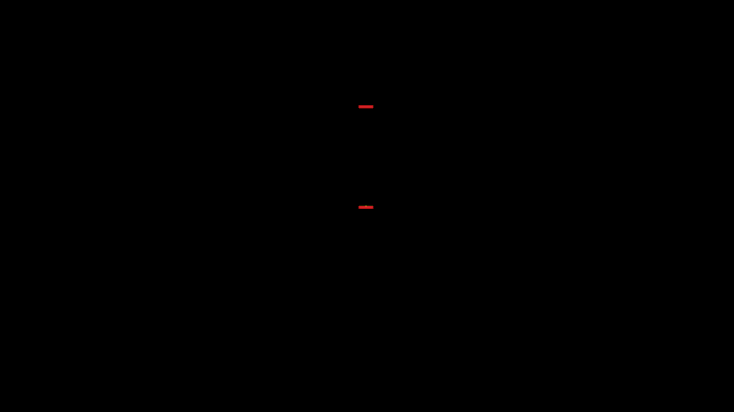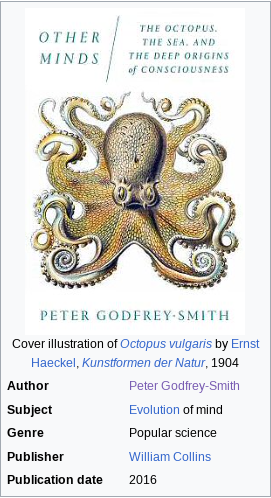Leaderboard
Popular Content
Showing content with the highest reputation on 05/15/24 in all areas
-
The light clock experiment with 2 light clocks( red and blue) starting at the same point: The expanding circles highlight how the the light pulses travel at c. The same experiment, but now, we are "riding along" the blue light clock. From the inertial frame where the red clock is stationary, the blue clock ticks slower, and the from the inertial frame where the blue clock is stationary, the red clock ticks slower. Keep in mind this is the same scenario, just viewed from different inertial frames of reference.2 points
-
What does that have to do with physics ? Simply put the reason cosmological redshift exists has nothing to do with probability but is a direct consequence of expansion due to thermodynamics. There is no guess work involved. The further an object is from us the greater the cosmological redshift value will be. That will not change due to some hypothetical probability. Just as there is no guess work behind expansion being homogeneous and isotropic. Physics isn't guess work. Its careful examination of observational evidence combined with mathematics to describe what is observed. Its not random guesses or mere logic games. That has been repeatably mentioned this thread. Any object you measure at the limit of any telescope will have the corresponding redshift to distance relation. That isn't based on any guesswork but is simply put what has been shown through all observational evidence. For example using one equation I was able to show your guesswork incorrect with regards to the SMBH. You could easily have done the same thing. The formula for Newtons gravitational law is extremely easy to use. If you spent more time studying why cosmology states what it does and learn how the thermodynamic laws are involved in expansion you would be far better off. Simply put expansion is easy to understand once you look at those equations of state I posted earlier.2 points
-
If memory serves there was someone who had an artificial island (WWII radar station, or something like that) in international waters who declared themselves to be a sovereign nation. <pause> found it https://en.m.wikipedia.org/wiki/Principality_of_Sealand One of the issues this points out is that other countries can just ignore your sovereignty claims.1 point
-
Feynman. But the context, and the whole message, matters a great deal. He immediately discusses comparing the guess with experiment to test it. If it disagrees with experiment, it’s wrong. If all you have is a guess, it’s not science. https://fs.blog/mental-model-scientific-method/1 point
-
That is really true, I beat oxy but sugar is on ongoing battle, I doubt I will ever really win. I have managed to reverse my type 2 diabetes1 point
-
There are going to be steps needed by anyone trying to form a micronation, like acquiring the land. This is a tough step considering no existing country wants to give up good territory. It may be easier to suppose you can just build an island in an appropriate place. Then there are steps (you mentioned some) that are unique to your new country, like your energy and transportation infrastructure, economy, and port systems. Are you a democracy or something else? One of the most important considerations is how you'll deal with other countries. Do you want open trade or do you want to protect your own manufacturers? It might be interesting to focus this discussion on how a new country like this could attract people to be citizens. What policies would you draft that would be most attractive to the people you want to populate your country?1 point
-
I quit eating sugar almost a year and a half ago, its made a big difference in my life, my cognition has improved, I've lost weight, I feel physically better than I did. I'd recommend to anyone to stop, you have to be ruthless, HFCS is in everything, sometimes hidden quite well. I eat very little sugar now, if I do its mostly in the form of honey or brown sugar and very little of it, almost no white sugar except in the tiny amount of bread I eat. I've cut carbs about as far as I can and still eat. Pumpernickel rules!1 point
-
1 point
-
There is also a lot of individual variation. Some of my dogs seeing a mirror the first time were at least curious, others basically immediately dismissed, one of the dumber ones barked a few times before realizing that no one else was reacting and so on. One of the issues that are often not documented (because they don't make a good hypothesis-driven paper) is that animals fail tasks because they are simply not interested.1 point
-
Dimethylmercury doesn't have many uses because of its toxicity. It can pass through layers of protective gloves. Scientist Karen Wetterhahn was a killed by it. IIRC handling protocols were changed after her death.1 point
-
Very interesting points. I don't seem to remember (or successfully google up) the name of a very influencial biologist (American/Australian/British...?) who called for more attention to cephalopods, and proposed to study them as models of radically different body plans that could be the basis of intelligent multicellular life other than mammalian. I'm sure you know who I'm talking about... Very interesting topic btw.1 point
-
I would like to ask if Gluons are affected by the Higgs field in the same way as atoms. I've watched PBS video about the possibility that the Higgs field doesn't engage all particles equally but the specifics weren't clear.1 point
-
There are gauge bosons (particles mediating the interactions) that acquire mass via the Higgs mechanism though. The W and Z bosons of the weak interaction are the famous example, because they were the first particles for which the Higgs-Kibble-Anderson-etc mechanism was proposed. Back in the '60s it was known they shouldn't be fundamentally massive on account of a very important symmetry --called the gauge symmetry-- being broken if they were. They must be acquiring mass from something that's dragging them. Another field. Thereby the Higgs. People knew they must be massive in practice, as the weak interaction is short-ranged. So it's kind of peculiar that some of these mediating particles (gluons and photons) don't acquire mass via the Higgs mechanism, while others (Ws and Zs) do. At least I find it so. I think that's a very good question, btw.1 point
-
In my own biased opinion, I always assumed that we underestimate animal intelligence. In part, because we cannot help but view it through our own experiences and hence, assume that anything closer to us (in appearance and behaviour) must also be more intelligent. A change is coming in that regard, though: https://www.ncbi.nlm.nih.gov/pmc/articles/PMC7555673/ When I did my undergrad, I was highly skeptical of some of the tests (such as the mirror test) as it presumes something about the animal (e.g. that the visual cue has any relevance to them). Moreover, typically only few animals are used in behavioural studies. If we were to study human behaviour, we would not (or at least should not) overinterpret the outcome. Yet, in animal studies folks often assume that there is less individual difference. I think most pet owners know that there is a lot of individual differences and only fairly recently studies have started to push to a change in the perspective of animal behaviour analysis.1 point
-
I've wondered about octopus intelligence because of their intelligent behavior (they test smarter than human toddlers, in some respects) and also things like having the highest encephalization quotient of any invertebrate, a degree of synaptic plasticity more associated with learning and memory centers of vertebrates, sophisticated control of 5 different types of chromatophores, and the whole "embodied" brain thing which is so unlike vertebrates. My guess is that they do have a unique form of intelligence that we are only starting to be able to measure. I have wondered if someday we discover that they are able to use chromatophores as a sophisticated language system, and not just for camouflage or basic emotions. Half a billion neurons is a lot, when you are invertebrate and weigh 6-20 lb. Another factor is that they are both predators and prey. This dual role usually makes more higher overall intelligence in the animal kingdom.1 point
-
That is, essentially, what any method that slightly slows the asteroid does. Hit it frontally with a kinetic weapon, it slows a tiny bit, thus arriving at the impact point a tiny bit later...and Earth has moved slightly farther along in its orbital path. You "moved Earth out of the way." 😀1 point
-
1 point
-
I'm not an astrophysicist, physicist, mathematician or scientist. I've invested in this idea only a part of my free time. Someone else could make these estimates but, if he wants to publish the results, he must refer me (and my blog) as the original author of the idea. I don't deal with the expansion of the whole universe but only with the accelerating expansion of the part of the universe that we have observed until now. Maybe billions of years from now, the part of the universe that we have observed will be sucked into the colossal black hole. Now the part of the universe that we observe is expanding because the astronomical objects closest to the colossal black hole have accelerations greater than the more distant objects.-1 points
-
I would like to distinguish the observable universe from the part of the universe that we can observe with our most powerful telescopes. I think that the observable universe is much larger than most people think. If there is an object distant 10100 light years, we could see it if we had a telescope enough powerful.-1 points
-
Hi Janus These gifs are awesome. There is no easy way to say this. The movement - observed trajectory/ distance of light dot depends on two speeds. Speed of light c and speeds v1 - horizontal speed of red mirrors and v2=horizontal speed of blue mirrors . speed c is distance d=3x10e8m which light moves in 1 sec. v1 is distance d1 red mirror moves in 1 sec v2 is distance d2 blue mirrors moves in 1 sec. Now again these are two separate systems Movement of light dot inside the clock has constant distance and time of 1 sec. the speed of light c is constant . The distance between mirrors L=3x10e8m is the way to go to see that . The distance d1 and distance d2 are accomplished by something transporting the mirrors - train ,road ,space shuttle…… The mirrors can not move on their own. The overlook is that we have two Newtonian events happening at the same time . The interaction between these two systems is by changing distances between observer 1 And blue clock light dot. The light dot has one distance dc=3x10e8m And distance of d2 =1 m/s(for example) If these events are not simultaneous- the total time to travel distance dc+d2 =d t=3x10e8 +1 m the total time will be tt=2 sec I mean light dot travels 3x10e8 m for 1 second - stops than perpendicular to it blue mirrors transport the dot 1 m to the right in 1 sec. The total speed vt=dt/tt=300000001/2=1500000000.5m/s If these two distances are travelled at the same time the observed trajectory will be Hypotenuse of triangle created by dc and d2 Total dt^2=dc^2+d2^2 The total time tt=1 .42 s tan Alfa =d2/dc for time of 1 sec d=v we can see that tan Alfa =v2/c Than total vt on hypotenuse will be vt=c x tan alfa I used Newtonian physics to solve the theory of relativity problem. How ? Over look is that two systems observed are Newtonian events happening at the same time . And increase in distance in observed trajectory - was misunderstood as a time dilation.-1 points














